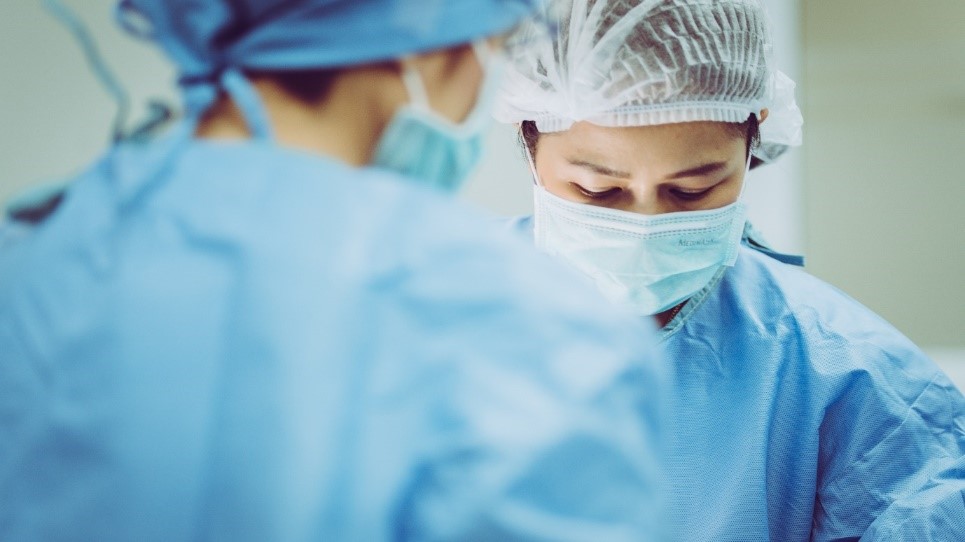“I’ve never considered any case insurmountable,” says Dr. Piyawan Kensakoo, a breast surgeon/ surgical oncologist at the Horizon Regional Cancer Center, Bumrungrad Hopital. “It’s just that each patient is a unique case, and it’s our job to tailor the surgery to their case as best we can, because we want the best treatment possible for them, so that they can go back to living their healthy lives as normal.”
Surgeons form a vital part of cancer treatment, but not every single cancer patient has to see a surgeon. Cancer treatment comes in many shapes and forms; chemotherapy, radiation therapy, surgery, or any combination of the available options that will achieve the best results for the patient.
“Before reaching the hands of us surgeons, a case would have been through many other stages and processes; digital mammogram imaging, ultrasounds, and probably biopsies too. We have to consider the particulars of each case very carefully, because surgery for cancer patients and non-cancer patients are quite a different proposition, with different approaches,” explains Dr. Piyawan. “Take patients with metastatic cancer, for example. Immediate surgery might be inappropriate. They would probably need a course of chemotherapy first, and if they respond well to that and the spread of cancer is under control, then we can look at surgery as an option. The ultimate well-being and safety of the patient is paramount.”
The decision-making and treatment prioritization process occurs jointly between the multidisciplinary team at the Horizon Regional Cancer Center and the patient. “The patient is the single most important factor in our decision making. We lay all the facts out on the table and make recommendations, so that the patient can make an informed choice about the options before them,” Dr. Piyawan went on. “But if there is a particularly difficult or rare case, we will raise the case for discussion at the tumor board conference that is attended by many other physicians and medical professionals who may be able to shed some more light on the matter. For example, certain cases of skin cancer with melanoma, or liver cancer—which is already very complex because of the anatomy it affects—these types of cases can be fiendishly complicated. That’s why we need to have a professional discussion to set the treatment priorities before we present the options to the patient.”
.jpg)
“I think the unique thing about the
Horizon Regional Cancer Center is the sheer depth of experience that exists among our surgeons. Their collective experience allows them to treat and care for our patients effectively and efficiently. Take for example, breast cancer, which is what I encounter most frequently as a doctor. In most other places, the typical treatment would be to surgically remove the breast, together with the tumor, and that would be it. But for us, more care is required,”
Dr. Piyawan goes on to explain the thinking behind her statement. “I firmly believe in keeping the body natural, making the patient feel as normal possible, and as least unwell as possible during treatment. That’s the way to get patients fully behind their treatment. That’s why the onco-plastic surgeon exists as a specialty. We do our utmost to find treatment approaches which ultimately result in our patients preserving their breasts in some form after surgery. There are different ways to achieve this, such as by grafting tissue from the back or from the stomach to form a new breast, or by using silicone implants. We try to retain the shape of the breast as much as possible, so that they can go back to living their lives as usual after surgery.”
Dr. Piyawan recounts her favorite case. “There was a patient who had come to us for second opinion. A mastectomy (breast removal surgery) had been recommended to her at another hospital, along with the removal of all lymph nodes. This was incredibly distressing to the patient, who was very worried about the future of her family and love life. I could see that if she had gone ahead with the mastectomy, her mental—and physical—wellbeing would be profoundly affected, so we designed a different type of treatment for her.
Every cancer patient’s condition is unique to their physiology, so we started with an immunohistochemistry (IHC) test. In this test, a chemical dye is used to stain the proteins expressed by cancer cells. From the protein panel we can determine the exact type of the cancer, which in her case was found to be a type that would respond well to targeted therapy. After consultations between the medical team and the patient, we decided to go ahead with a course of chemotherapy prior to surgery.
.jpg)
When the time came for surgery, we found that the tumor had already shrunk to just one centimetre, the lymph nodes would not have to be removed at all, and that her breasts could be retained in their entirety. This is what’s called a complete pathologic response. Her breasts were saved and uncomfortable complications such as swollen arms were avoided thanks to the care we put into a detailed diagnosis and thorough treatment,” Dr. Piyawan recounted with a beaming smile.
A surgeon’s advice
“Your physical and mental condition both have a profound effect on the success of treatment. Patients who have a good mindset, a positive attitude, practice a healthy diet and exercise regimen, these are the patients who have the best chance of successful treatment,” Dr. Piyawan’s final words of advice err on the side of caution. “But the chances are even better with early detection of abnormalities, or if the cancer is caught in its early stages, which will increase the chances of being ultimately clear of cancer even more. This is why I recommend regular screenings every year.”
For more information please contact:
Last modify: August 30, 2023